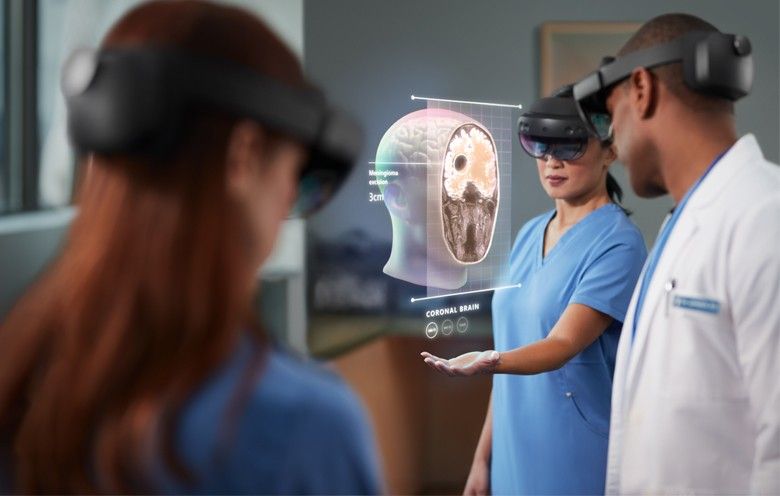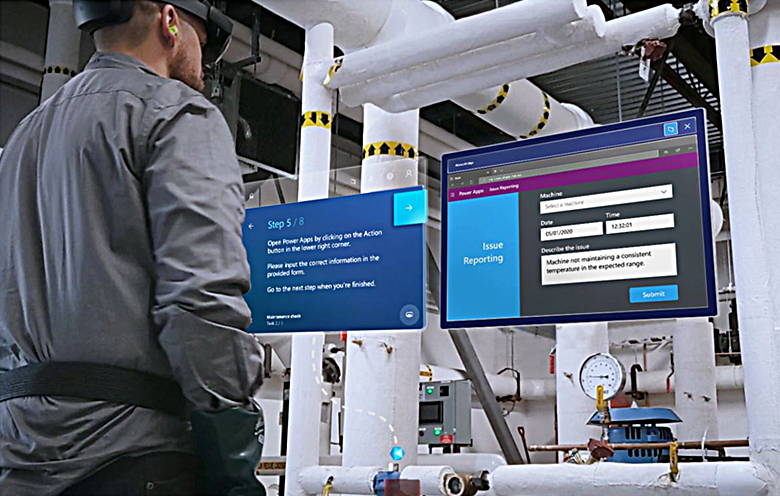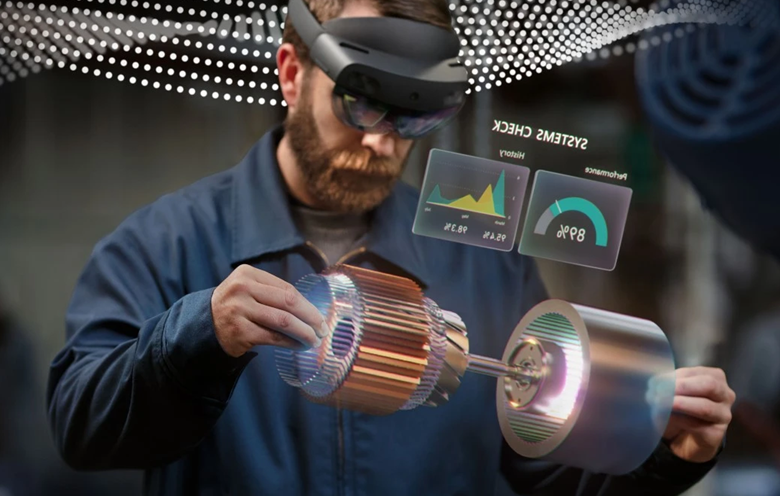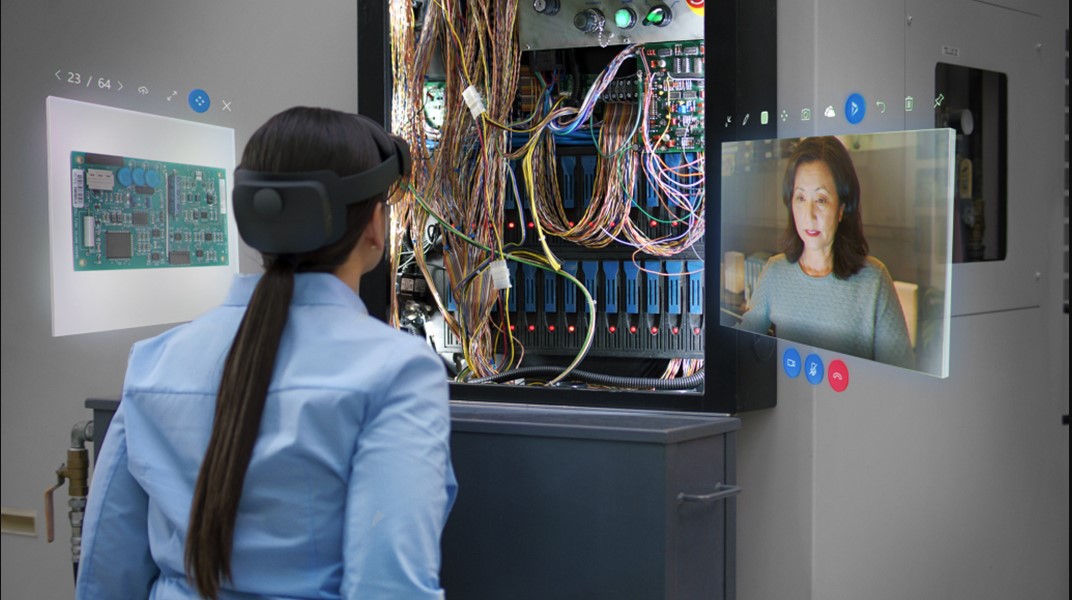The healthcare industry is undoubtedly a field that’s leading in the adoption of cutting-edge technologies. From telemedicine to robotic surgeries, the healthcare sector has accepted the transformation that different technologies offer with open hands.
Above all else, the COVID-19 pandemic forced healthcare companies to look towards futuristic technologies like mixed reality (MR) unlike ever before. As a result, numerous promising medical technologies are being tested on a massive scale. However, there are always some areas of improvement that need to be tended. This will not only ensure the betterment of healthcare companies and hospitals but also of patients and care providers. Two such crucial areas that can be enhanced are nursing education and patient care.
The digital health market should reach nearly 660 billion dollars by 2025. – Statista
MR technology can bring change in these fields and help hospitals to become technologically advanced and improve patient care. This blog explores a few of the issues that the healthcare industry faces and how MR addresses them.
Challenges faced by nursing education
Nursing practice in the unprecedent times invites setbacks. This includes, increasing deficit in nursing staff and nursing educators along with a shift in the age of the nursing workforce. To adapt to the rapidly changing healthcare paradigm and advancing environments, nursing educators must leverage modern teaching-learning strategies.
The need for new techniques to deal with massive amounts of information, concepts and developing new skills has become crucial. Registered nurses acquire a widened knowledge. However, providing education at such a large scale demands the use of technology that is secure and accessible remotely.
Quality and competent faculty development as well as faculty vacancies are some of the biggest challenges in nursing education. There aren’t many opportunities for nurses to practice or integrate theoretical learning into practice. Nursing schools require faculty members who are experts in offering their knowledge, are also tech-savvy and allow students to access an environment for practice.
Many healthcare institutes are well-versed with the latest technologies. This creates a demand for nursing staff who are skilled and compatible with the practice setting of such healthcare environments. However, nursing education hasn’t advanced so much to offer tech-based training to their students.
Challenges faced by the healthcare industry in improving patient care
The new economy empowered by pandemic and emerging tech has changed the market landscape and no industry is untouched by this change. The healthcare industry is no different. Today’s world demands advanced medical devices, qualified medical professionals, and well-equipped hospitals and clinics. However, there are several problems faced by healthcare companies that hinder their growth in offering better patient care. Here are a few of the key challenges:
Manual documentations
Healthcare professionals constantly communicate with each other about medical information using different forms of documentation. Traditionally, manual documentation systems are practiced to record, track, manage and store patient data. However, mistakes are unavoidable when dealing with manual paperwork. The most critical issue for the industry is the use of high-quality information to improve patient care. To achieve this, hospitals need to adopt technologies that help them access information anytime from anywhere.
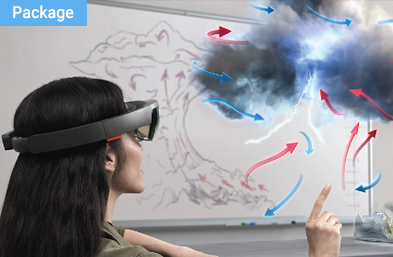
HoloLens Pilot Project
Our aim is to give enterprises clarity in terms of the deliverables and expectations when it comes to building a full-scale HoloLens specific application along with a precise estimate of the time required.
Lack of remote access to the healthcare staff
A conventional approach towards seeking treatment is that a patient runs to the nearest healthcare centre. This obligates individuals to get in-person consultations. However, with the recent COVID outbreak and lockdowns, this scenario has changed the way people perceive healthcare.
The need for remote access or virtual consultations is the approach we require. Hospitals and healthcare service providers must leverage technologies that allow them to connect with patients remotely and guide them in their journey to recovery.
Traditional methods of training medical students
Medical students require a practical approach along with visual materials to prove the written thesis. Moreover, they aren’t sure of how to deploy these theoretical practices properly in a real-world scenario. To present live examples for students pursuing medicine and healthcare would be expensive and risky.
How MR can help in improving healthcare processes
Augmented reality (AR) and virtual reality (VR) come together as MR to enable the healthcare industry to take a step towards digital transformation. The immersive visuals provided by MR technology are equally helpful to patients as well as practitioners and nurses. While nurses and healthcare providers can be trained using this technology, patients can leverage visual guides to make them more comfortable with the upcoming surgeries or procedures.
According to the Global Mixed Reality in Healthcare Market report for 2020-2026, the global healthcare market is expected to grow by 10 times, and Grand View Research found that it is projected to be the top industry for growth in augmented reality.
HoloLens for the healthcare industry
The adoption of HoloLens, a mixed reality headset from Microsoft, has been widespread in various industries. From manufacturing to sales and design to architecture and others HoloLens offers significant opportunities for digital transformation. Similarly, for the healthcare industry, it facilitates remote consultation, education and improved diagnosis as well as treatment.
Empower care teams
A HoloLens app development for medical practitioners allows them to efficiently carry audits and inspections remotely, making staff safer and more productive. It also drives greater remote patient satisfaction in times when travel has been restricted. Moreover, the medical staff can access data or information remotely to provide enhanced care to their patients.
Enhance patient experience
Patients can interact with the shared hologram, deploying and playing around the immersive image as they require. HoloLens app makes great use of holographic sharing and synchronization, allowing patients to get accustomed to the procedures that they might undergo. However, HoloLens glasses aren’t a requirement. Healthcare facilities can use them for nurses, doctors and students while patients can consult using HoloLens app via tablets and smartphones.
Timely diagnosis
Healthcare providers can create a virtual environment for patients to understand their symptoms and diseases better. This enables patients to feel at ease and helps doctors to give timely diagnosis by accessing critical information remotely. A HoloLens app bridges the gap between the patient and the doctor, allowing doctors to come up with relevant solutions.
Training nursing staff and other healthcare professionals
Implementing mixed reality in nursing education allows students to investigate, walk around and delve inside their subjects. A mixes reality app helps to increase practicing nurses’ engagement and understanding of abstract concepts.
The holograms produced by HoloLens enable nurses and healthcare professionals to go beyond the traditional way of learning of dissecting cadavers. Also, nobody gets hurt or injured if something goes wrong in a medical simulation. Body parts can be viewed and interacted with in isolation, helping students to learn how to operate on them or how to diagnose symptoms of that particular part. For example, if students want to study the anatomy of the heart of a person, the HoloLens app enables them to view it separately from the entire body.
Immersive solutions for better education and patient care
MR training in nursing education helps them learn faster and better with practical knowledge based on the interactive simulations offered by HoloLens. Moreover, the healthcare industry can also leverage the following benefits by adopting HoloLens MR solutions:
- 3D holograms for interactive training
- Remote training and support for distance learning
- Simulation-based learning
- Visualized, guided surgery for better patient treatment
There are numerous other advantages of MR technology, and HoloLens especially, that can change the healthcare narrative and improve patient care. To learn more about how HoloLens can help you achieve your business goals, you can contact our MR experts.
